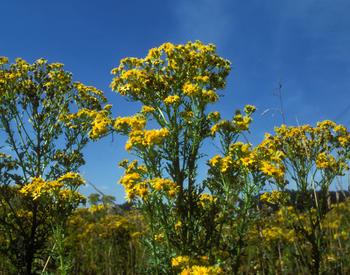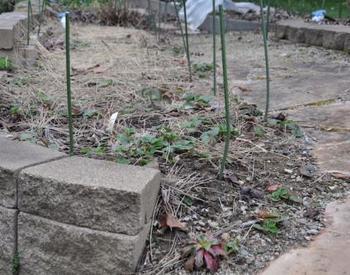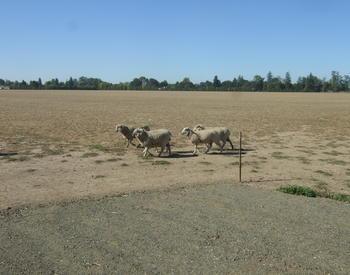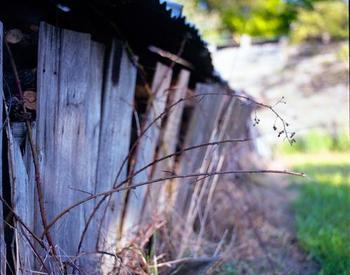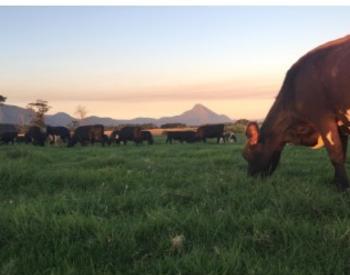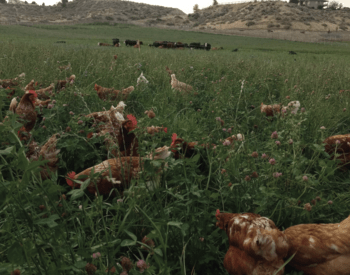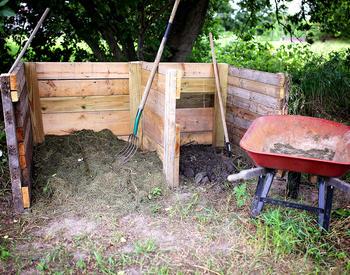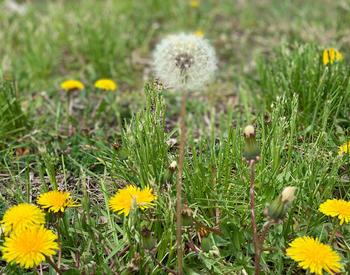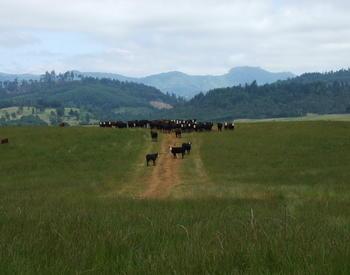Introduction
Foxtail is a problematic grass in pastures and hayground, and infestations need immediate attention. Small infestations of foxtail should be spot treated, while larger infestations require whole pasture renovation. Existing foxtail plants should be killed with an herbicide. A no-herbicide alternative is repeated tillage and rest during summer heat. And, since there are foxtail seeds in the soil, those need to be dealt with as well. Finally, the foxtail needs to be replaced by a strong stand of competitive grass and clover.
A suggested treatment regimen for treating foxtail includes soil testing and fertilizing, herbicide treatments, working the ground, reseeding to a desirable species, proper grazing management, and monitoring for success.
Treatment Regimen
Soil Fertility
Make sure your field’s fertilizer program is correct so that desirable forages have proper growing conditions. Otherwise, weeds may continue to dominate your field. Be ready to make any adjustments to fertility while you are working the ground during your foxtail kill. Soil amendments are more effective if worked into the soil compared to the topdressing method. Take a soil sample and have it analyzed at a certified lab for pH (acidity) and fertilizer levels (phosphorus, potassium, calcium, magnesium, and boron).
Publications on how to take a soil sample (EC 628), available laboratories (EM 8677), Nutrient Management for Pastures: Western Oregon and Western Washington(EM9244) and Updated Lime Requirement Recommendations for Oregon are available from the Extension office or via the Internet. Search for or request publications by number.
Killing foxtail
Since foxtail is a grass, broadleaf herbicides do not control it. Glyphosate is a non-selective herbicide that will kill foxtail as well as most all other plants (grasses and broad leaved). Check out the fact sheet on toxicity, Glyphosate Questions & Answers. Propoxycarbazone-sodium (temporarily unavailable in Oregon; was sold as Canter R&P and Lambient) is selective against several broadleaf weeds and weedy grasses, including foxtail, and will not kill most improved forage grasses. Use glyphosate for a complete kill in areas with solid foxtail presence. When and where available, use Lambient for a more selective kill when desirable grasses predominate and foxtail is a minor component.
For a non-herbicide alternative, the foxtail plants must be turned under and allowed to degrade in the dark, hot summer soils. Repeat as necessary. Mowing is ineffective as the foxtail just make seeds on a shorter stalk. Grazing prior to foxtail seed head formation can put some pressure on the weedy plant but animals stop grazing it once it goes to seed.
Complete kill
Spray the pasture with glyphosate (Round Up or Honcho, for example). Wait 7 to 10 days and disk the ground to turn under the dead plant residue. At this time, incorporate any fertilizer amendments by tillage and go over the field with a roller to prepare a fine seedbed for your new forage crop. Allow any existing foxtail seeds to germinate by waiting for rain or applying irrigation, and then respray this new growth when sufficient plant material is present (about two weeks). It will probably take two or three rounds of this to control the majority of foxtail plants germinating from the existing seed bank in the soil. Use a temporary pasture (see below) seeding in between rounds.
Selective kill
Use Lambient herbicide as directed on the label to selectively remove foxtail from among desirable grasses. It is listed as only partial control, so re-treatment will be necessary. Read the label carefully for information on use to get good effectiveness. Some of this information includes that you must add a non-ionic surfactant to the mix. There is a limit to the amount you can spray in one year, see information on timing to spray so that it coincides with the growth of the weedy grasses and the release of good grasses. Use a well calibrated boom sprayer and try selectively spraying 1.2 oz/ac fall yr 1 and 1.2 oz/ac spring yr 2 (1.2 oz/yr limit), then follow-up annually if needed.
Lambient controls bromus species (including cheatgrass) and wild oat, and partially controls Foxtail Barley. It will kill some broadleaf weeds but also may kill clovers and other beneficial herbs. The label says it is safe on annual and perennial ryegrasses and orchardgrass. Tall fescue is not listed as safe, but it might still be okay (test it on a small area).
Temporary pasture forage
When glyphosate is used for a complete kill, it will probably take two or three times to control the majority of foxtail plants germinating from the existing seed bank in the soil. Therefore, a series of annual crop plantings is needed as a temporary pasture. This will exhaust the foxtail seed bank, unless the foxtail is allowed go to seed again. Mowing of the foxtail has been ineffective, as the plant will send up another seed head on a shorter stalk.
Foxtail is generally known to be an annual plant, however, it has acted as a perennial in some situations, especially under irrigated systems. So, after the respray (see above), do not rework the soil, rather drill or broadcast annual ryegrass or a cereal grass (oats and peas, for example) at a high rate. This forage may be grazed or hayed as a temporary crop.
Some people do not like the characteristics of annual ryegrass, especially its aggressive re-seeding potential. You can avoid this by planting a "true" annual ryegrass in the spring. It will not go to seed the first year due to its required vernalization (needs to over-winter in order to go to seed the next spring).
Permanent Pasture
After using the complete kill procedure and you are satisfied that the foxtail problem is controlled, plant a permanent pasture after the last spray of glyphosate. Plant new seeds of desirable forage without reworking the ground after the last round of treatment. Be sure to choose forage plants that are suited for your pasture site (drainage, intended use, irrigation, etc.) and have taken steps to correct any soil fertility problems.
Once your new pasture is established, proper grazing management is essential for maintaining a healthy pasture. Be careful to maintain a minimum pasture stubble height (3” for fescue or orchardgrass; 2” for ryegrass) and use some type of rest-rotation grazing routine. More information on plant selection (EC 1157, PNW 501, PNW502, PNW 503, and PNW 504) and grazing management (EM 8645, page 6) can obtained from the Extension office or on the OSU publications website. Search for or request publications by number.
Be careful not to reintroduce foxtail into your permanent pasture. When livestock have been grazing infested areas make sure they are not bringing seeds into your good pastures, either in their coats, feet, or gastrointestinal track. It takes 2-3 days for the seeds to pass through the animal and the seeds are still viable. Do not feed hay with foxtail seeds to livestock. Inspect hay before purchase by checking some bales or looking at the field where it is growing. Scout for any foxtail plants that come up in your permanent pasture and apply the proper controls.
Use pesticides safely!
- Wear protective clothing and safety devices as recommended on the label. Bathe or shower after each use.
- Read the pesticide label—even if you’ve used the pesticide before. Follow closely the instructions on the label (and any other directions you have).
- Be cautious when you apply pesticides. Know your legal responsibility as a pesticide applicator. You may be liable for injury or damage resulting from pesticide use.
